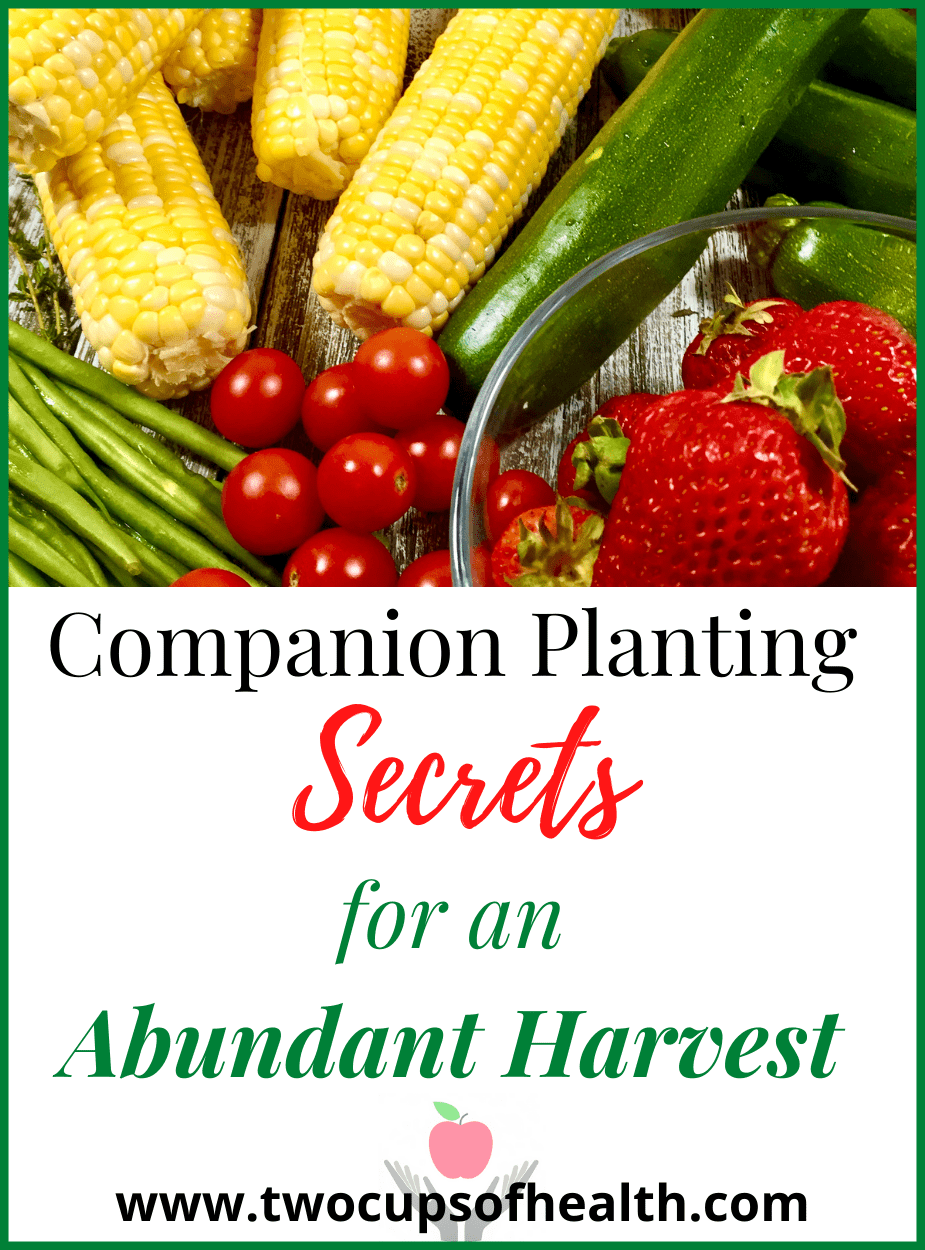If you want an abundant harvest, understanding companion planting secrets will make your plants thrive.

Companion Planting is Not New
Companion planting is not a new idea.
While not exactly based on hard science, the concept is solidly built on observation and experience over many generations.
Science is just now beginning to research and validate the benefits.
In North America companion planting started thousands of years ago.
When indigenous people could no longer support their communities solely by hunting and gathering, they finally saw the advantages of, literally, putting down roots.
They became farmers.
Observing nature, they noted that certain plants thrived in close proximity to others.
They learned to harvest seeds from native plants and to cultivate them into bountiful harvests year after year.
You could say they adopted sustainable farming techniques long before it was cool.
There are thousands of beneficial companions, so the combinations are one of many considerations in planning your garden.
For example, you may start with a Three Sisters Garden.
Grown for hundreds of years, and still popular today, the three “sisters” are corn, beans, and squash planted side by side.
Why do they work so well together?
Corn needs space and nitrogen to grow, and beans need a strong support to climb, such as a corn stalk.
Beans repay the favor by absorbing nitrogen from the air and storing it in the soil for the corn to absorb.
Squash spreads its leaves and creates mulch to cool and moisten the soil, which makes the beans and corn happy, and all three sisters get along famously.
In fact, squash is so revered that the flavorful, delicate squash blossom is still prominent in beautifully crafted Native American jewelry.
Companion Planting Also Helps Pest Control
While pest control is not the primary reason for companion planting, tremendous benefits come from letting nature manage pests instead of using harmful chemicals.
Companion herbs that can protect against everything from aphids to spider mites include:
- Basil
- Borage
- Chives
- Cilantro
- Lavender
- Mint
- Oregano
- Rosemary
- Sage
- Thyme
Companion flowers, such as marigolds, nasturtiums, zinnias, and sunflowers can control nematodes, bean beetles, and many other harmful insects.
Garlic and onions repel fruit tree borers. Pumpkins planted with corn discourage corn-eating pests.
Dill alongside cabbage, beans near potatoes, radishes near squash and cucumbers can help control pests and rodents.
These are just a few of the companions that play well together. For a more complete guide, see this post.
Companion Planting in a Chef’s Garden
The beauty of companion planting is that it lends itself so well to our Chef’s Garden, the small raised-bed kitchen garden we’re planning for spring.
We can plant multiple crops during a season, starting with heavy feeders such as cabbage, followed by legumes to restore the soil, then light feeders such as herbs, vegetables, and flowers.
Protective flowers finish the cycle, then we start over again next season.
The size of your garden doesn’t matter. Any size can benefit from companion planting techniques, as opposed to monoculture gardening.
Think about it: with just one crop in the ground, the lost benefits of companion plants must be replaced artificially with fertilizer, chemicals, and poisonous pest control methods.
Where to begin
With so many possible combinations, the whole concept can get a little overwhelming.
So here are links to helpful resources to guide your planning:
First, you’ll need to know what zone you live in to determine which varieties will thrive in your garden. This interactive USDA Plant Hardiness Zone Map can answer that question. Open the link and zoom in on your home!
Be sure to narrow your zone down to the letter.
We’re in 7a, which has a slightly different temperature range that 7b.
To everything there is a season
Once you know your zone, the next step is planning what to plant, and when. This process is much simpler with a garden planner.
We love the Farmer’s Almanac Garden Planner, their planting calendar, and all the great advice offered in The Old Farmer’s Almanac and on their Farmer’s Almanac website. Also check out The Vegetable Garden Pest Handbook,
Farmers, gardeners, weather watchers, and nearly everyone else have relied on their amazingly accurate forecasts and planting advice for 230 years, so we tend to trust them.
Like to know more? Click this link for our Companion Planting Guide
If you liked this article, see our post on Starting the Chef’s Garden.
